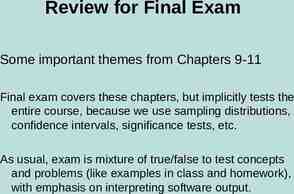Group Theory and Rubik’s Cube Hayley Poole
27 Slides663.50 KB

Group Theory and Rubik’s Cube Hayley Poole

“What was lacking in the usual approach, even at its best was any sense of genuine enquiry, or any stimulus to curiosity, or an appeal to the imagination. There was little feeling that one can puzzle out an approach to fresh problems without having to be given detailed instructions.” From “Mathematical Puzzling” by A Gardiner Aspects of Secondary Education, HMSO, 1979

This presentation will cover The history of the Rubik’s Cube Introduction to group theory Ideas behind solving the cube

Erno Rubik Born 13th July 1944 in Budapest, Hungary He is an inventor, sculptor and Professor of Architecture.

History of the Rubik’s Cube Invented in 1974 Originally called “Buvos Kocka” meaning “magic cube” Rubik was intrigued by movements and transformations of shapes in space which lead to his creation of the cube. Took him 1 month to solve. By Autumn of 1974 he had devised full solutions

History continued Applied for it to be patented in January 1975 Cube launched in Hungary in 1977 Launched worldwide in 1980 First world championship took place in 1982 in Budapest, winner solving it in 22.95 seconds TV cartoon created about it in 1983

“Rubik, the amazing cube” Shown in America from 1983-1984 About four children who discover that their Rubik's cube is alive (when the coloured squares on each of its sides are matched up), and has amazing powers. They befriend the cube, and they use its powers to solve mysteries.

Number of possible orientations 8 corner cubes each having 3 possible orientations. 12 edge pieces each having 2 orientations The centre pieces are fixed. This will give rise to a maximum number of positions in the group being: (8! x 38) x (12! X 212) 519,024,039,293,878,272,000

Some positions in the cube occur from a result of another permutation. Eg, in order to rotate one corner cube, another must also rotate. Hence, the number of positions is reduced. This leaves (8!x37)x(12!x210) 43,252,003,274,489,856,000 or 4.3x1019 positions.

Other Cubes Pocket Cube: 2x2x2 Rubik’s Revenge: 4x4x4 Professors Cube: 5x5x5 Pyraminx: tetrahedron Megaminx: Dodecahrdron

How do we use maths to solve the cube? Every maths problem is a puzzle. A puzzle is a game, toy or problem designed to test ingenuity or knowledge. We use group theory in solving the Rubik’s cube.

Introduction to groups A Group is a set with a binary operation which obeys the following four axioms: Closure Associativity Identity Inverse

Closure – If two elements are members of the group (G), then any combination of them must also be a member of the group. For every g1,g2 Є G, then g1º g2 Є G Associativity – The order in which the operation is carried out doesn’t matter. For every g1,g2,g3 Є G, we have g1º (g2º g3) (g1º g2)º g3 Groups Identity – There must exist an element e in the group such that for every g Є G, we have e º g g ºe g Inverse – Every member of the group must have an inverse. For every g Є G, there is an element g-1 Є G such that g º g-1 g-1º g e

Propositions and Proofs The identity element of a group G is unique. The inverse of an element gЄG is unique. If g,h,ЄG and g-1 is the inverse of g and h-1 is the inverse of h then (gh)-1 h-1g-1.

Basic Group Theory Consider the group {1,2,3,4} under multiplication modulo 5. The identity is 1. 2 and 3 generate the group with having order 4. 4 has order 2 (42 1). Elements 1 and 4 form a group by themselves, called a subgroup. X5 1 2 3 4 1 1 2 3 4 2 2 4 1 3 3 3 1 4 2 4 4 3 2 1

Points about Groups and subgroups The order of an element a is n if an e. All subgroups must contain the identity element. The order of a subgroup is always a factor of the order of the group (Lagrange’s Theorem). The only element of order 1 is the identity. Any element of order 2 is self inverse. A group of order n is cyclic iff it contains an element of order n.

So what does this have to do with solving Rubik’s cube?

Does Rubik’s Cube form a group? Closure – yes, whatever moves are carried Closure – yes, whatever moves are carried out we still have a cube. Associativity – yes (FR)L F(RL). Identity – yes, by doing nothing. Inverse – yes, by doing the moves backwards you get back to the identity, eg (FRBL)(L-1B-1R-1F-1) e Therefore we have a group.

Up (U) Back (B) Right (R) Left (L) Face (F) Down (D)

The corner 3-cycle Consider FRF-1LFR-1F-1L-1 Three corner pieces out of place – permuted cyclicly. Why does a long algorithm have such a simple effect?

g and h are two operations Denote [g,h] ghg-1h-1 - Commuter of g and h, as [g,h] 1 iff gh hg. Proved easily: multiple [g.h] by hg on right: ghg-1h-1hg ghg-1g gh hg hg hg g and h commute if gh hg. The equation [g,h] 1 says that the commuter is trivial iff g and h commute with each other.

g is an operation on the cube, the support of g denoted supp(g) is the set of pieces which are changed by g. Similarly for h. If g and h have disjoint support, ie no overlap then they commute. Consider the R and L movement of the cube. The support of R consists of the 9 cubes on the right and the support of L consists of the 9 cubes on the left. Moving R doesn’t affect L. Therefore LR RL

Now if g and h are two operations whose supports have only a small amount of overlap, then g and h will almost commute. This means [g,h] will be an operation affecting only a small number of pieces. Going back to the initial sequence of moves: FRF-1LFR-1F-1L-1, let g FRF-1

h L only affects the 9 pieces on the left, and of these, the previous diagram shows that g FRF-1 only affects a single piece. Since there is little overlap between the supports of g and h, these operations will almost commute so their commuter is almost trivial.

Therefore, [g,h] FRF-1LFR-1F-1L-1 should only affect a small number of pieces, in fact it affects 3.

Brief Application to school level describing properties of shapes nets and how 3D shapes are made Rotation and symmetry Area and volume

Conclusions Group Theory is a very versatile area of mathematics. It is not only used in maths but also in chemistry to describe symmetry of molecules. The theory involved in solving the rubik’s cube is very complicated.






